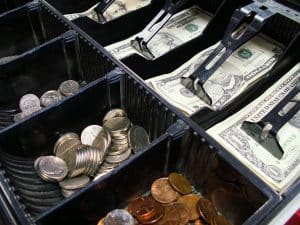Cash: Definition, Pros, Cons and History
Cash – Brief History and Definition
Money has been in existence for thousands of years, and cash is one of the most commonly used forms of money. Cash is the physical currency that you can hold in your hand and use to buy stuff. For many people, cash is the most convenient way to make everyday purchases. In this blog post, we will explore the history and definition of cash, and its relevance in today’s fast-paced world.
The use of cash dates back to ancient times when people used metal coins as currency. The Romans and Greeks were the first to use coins as a medium of exchange, and paper currency appeared in China during the Tang dynasty. The widespread use of coins and paper currency continued throughout the middle ages, and new forms of currency, such as banknotes and cheques, were introduced in later years. Today, more and more people are using electronic forms of money, which poses a challenge for the future of cash.
Cash Definition
Cash refers to physical currency that is used as a medium of exchange. It can include coins and banknotes or paper currency and is generally accepted as money. Cash is highly liquid, meaning it can be easily exchanged for goods and services. The use of cash is still essential in many parts of the world because it remains the most common way to buy everyday items, particularly for those without access to electronic payment methods.
Advantages of Cash
The most obvious benefit of cash is its universal acceptance. Almost all businesses accept cash, and it’s readily available to the user, making it a convenient payment method. Moreover, cash transactions cannot be traced, so it offers privacy and enables anonymity, which can be an advantage for individuals who value their privacy. Lastly, cash can be used as a budgeting tool because it is easier to track one’s spending when using physical money.
Disadvantages of Cash
Physical currency involves costs of production, transportation, storage, and protection, making it expensive to maintain. Additionally, cash is susceptible to theft and fraud since it is a physical commodity that can be stolen or counterfeited. Finally, cash payments don’t provide a paper trail, making it difficult to prove the transaction’s existence when disputes arise.
Conclusion
Cash is an essential form of currency that has been in existence for thousands of years. It provides convenience, privacy, and a budgeting tool to the user. However, cash payments are becoming less popular as electronic payments become more prevalent in our society. Cash is expensive to manage and poses risks associated with theft, fraud, and counterfeiting. Despite these challenges, cash remains a relevant method of payment for many, and it is crucial to understand its history, definition, and advantages and disadvantages to make informed financial decisions.


